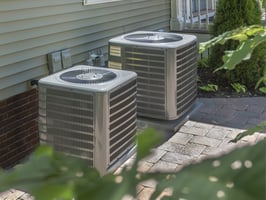As the demand for sustainable living increases, constructing net-zero homes has become a trend in the construction industry. For builders and subcontractors, understanding the nuances of net-zero building not only positions you at the forefront of the market but also contributes significantly to environmental conservation. This blog explores the key considerations, strategies, and technologies essential for building efficient, net-zero homes.
Understanding Net-Zero Homes
Net-zero homes are designed to produce as much energy as they consume over the course of a year. Achieving this balance involves a combination of energy efficiency and renewable energy production. The goal is to create a living space that has a minimal carbon footprint and reduces utility costs for homeowners.
Key Considerations for Net-Zero Construction
Site Selection and Orientation
Choosing the right site is the first step. The orientation of the home should maximize natural sunlight for heating and solar power generation while minimizing energy loss. South-facing sites are typically ideal for solar panel placement in the northern hemisphere. Builders should also consider natural shading and wind patterns to optimize the home’s heating, cooling, and ventilation systems.
Building Envelope and Insulation
A highly efficient building envelope is crucial for maintaining temperature and reducing energy needs. This includes advanced framing techniques, high-performance windows, and doors, as well as comprehensive insulation. Builders should focus on creating an airtight environment that minimizes thermal bridging and maximizes R-value—a measure of insulation's ability to resist heat traveling through it.
Energy Efficient Systems and Appliances
Selecting the right systems and appliances is essential for reducing energy consumption. This includes high-efficiency HVAC systems, water heaters, and ENERGY STAR-rated appliances. Smart home technology can further enhance energy savings by allowing homeowners and builders to monitor and control energy use more effectively.
Implementing Renewable Energy Solutions
Solar Power
Integration Solar panels are the most common feature of net-zero homes. Builders should work with skilled subcontractors to design and install photovoltaic systems that meet the home’s energy requirements. It’s important to calculate the expected energy usage and match the output of the solar array accordingly.
Other Renewable Options
Depending on the location and climate, other renewable energy sources such as geothermal systems can be incorporated. These technologies can help achieve net-zero status or even allow homes to produce more energy than they consume, turning them into net-positive structures.
Educating Subcontractors and Clients
Building a net-zero home requires coordination across various disciplines. Educating your team about the specific requirements and best practices of net-zero construction is vital. Additionally, builders should communicate the benefits and processes involved in net-zero homes to clients to ensure they are supportive and understand the value of their investment.Leading the Charge in Sustainable Home Construction
Constructing net-zero homes is more than just a building trend; it's a responsibility towards a sustainable future. As builders and subcontractors, embracing these practices not only meets the growing demand for eco-friendly homes but also sets a high standard in the residential construction industry. By mastering the art of net-zero building, we can provide homeowners with not just a house, but a sustainable living solution that stands the test of time.
Whether you are a seasoned builder or new to the industry, the future of home building is undoubtedly green, and getting involved in constructing net-zero homes is a step towards that future. I have built several net-zero homes and have learned quite a bit through each build. I am happy to talk with you about net-zero construction best practices.




